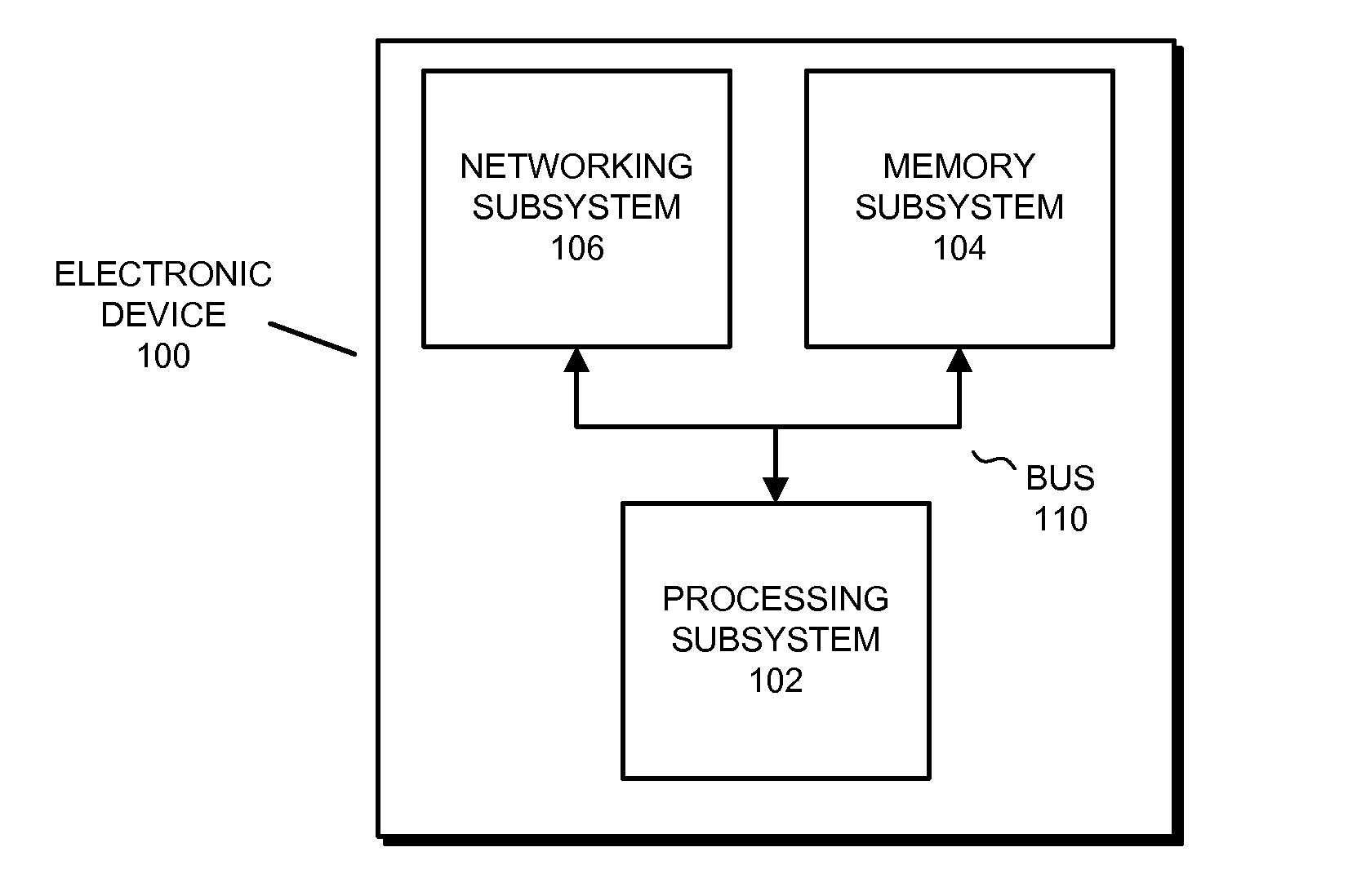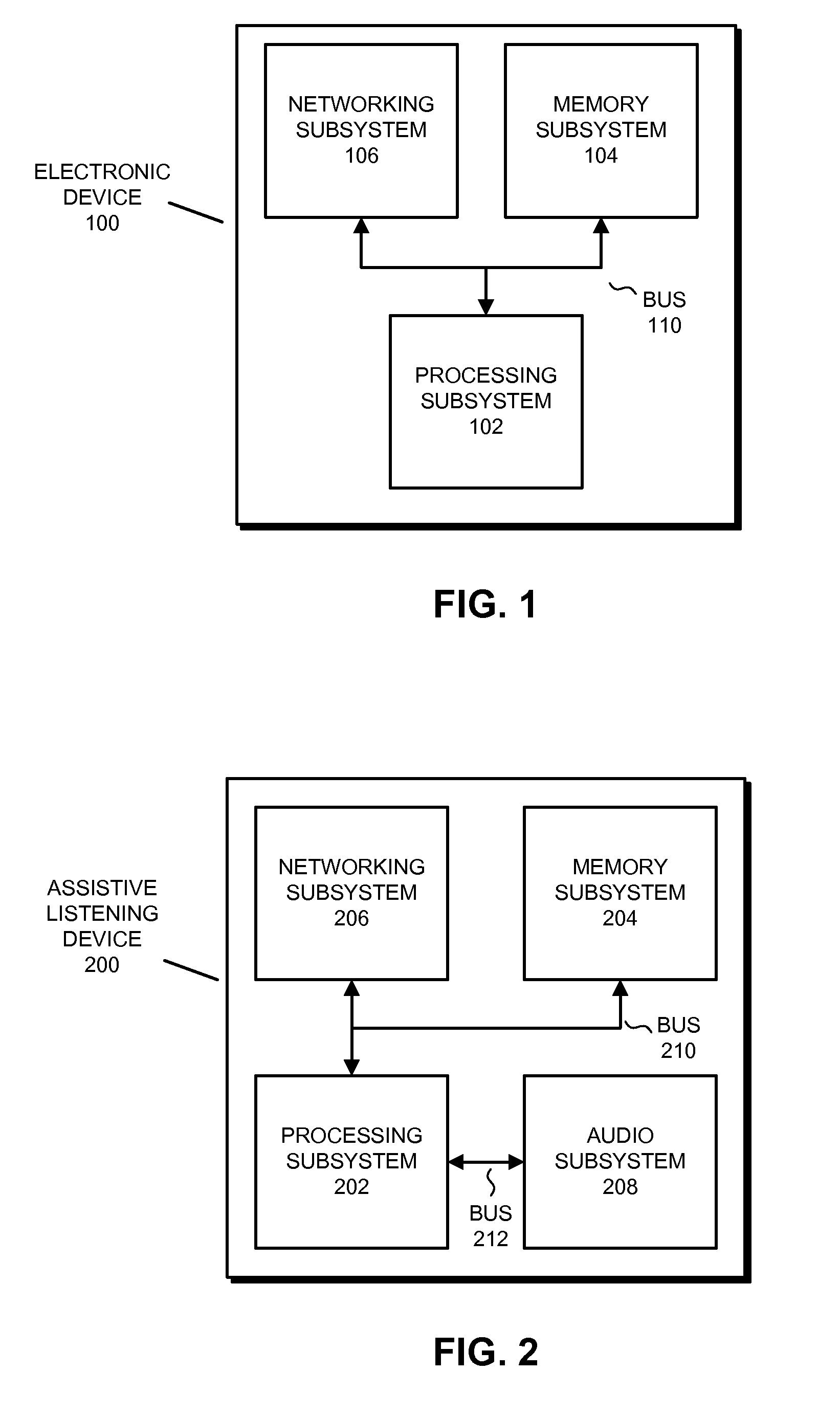Audio transfer using the bluetooth low energy standard
a low energy standard and audio transfer technology, applied in the field of electronic devices, can solve the problems of difficult or impossible to transmit clearly audible sound through the air, the power supply of many assistive listening devices is very restrictive, and the battery size of the devices correspondingly small, so as to increase or decrease the connection interval, the effect of increasing or decreasing the connection interval
- Summary
- Abstract
- Description
- Claims
- Application Information
AI Technical Summary
Benefits of technology
Problems solved by technology
Method used
Image
Examples
Embodiment Construction
[0039]The following description is presented to enable any person skilled in the art to make and use the described embodiments, and is provided in the context of a particular application and its requirements. Various modifications to the described embodiments will be readily apparent to those skilled in the art, and the general principles defined herein may be applied to other embodiments and applications without departing from the spirit and scope of the described embodiments. Thus, the described embodiments are not limited to the embodiments shown, but are to be accorded the widest scope consistent with the principles and features disclosed herein.
[0040]The data structures and code described in this detailed description can be stored on a computer-readable storage medium. The computer-readable storage medium can include any device or medium (or combination of devices and / or mediums) that can store data structures and code for use by a computer system / electronic device. For example...
PUM
 Login to View More
Login to View More Abstract
Description
Claims
Application Information
 Login to View More
Login to View More - R&D
- Intellectual Property
- Life Sciences
- Materials
- Tech Scout
- Unparalleled Data Quality
- Higher Quality Content
- 60% Fewer Hallucinations
Browse by: Latest US Patents, China's latest patents, Technical Efficacy Thesaurus, Application Domain, Technology Topic, Popular Technical Reports.
© 2025 PatSnap. All rights reserved.Legal|Privacy policy|Modern Slavery Act Transparency Statement|Sitemap|About US| Contact US: help@patsnap.com



